The Impacts of Pesticides on Biodiversity and Health
This article explores the multifaceted effects of pesticides on ecosystems and human health, highlighting critical insights into environmental sustainability and public health concerns. Pesticides, often seen as the unsung heroes of modern agriculture, play a crucial role in protecting crops from pests and diseases. However, beneath this facade of agricultural efficiency lies a complex web of consequences that affect not just the intended targets but also the broader environment and human health. As we dive deeper into this topic, it's essential to consider both the immediate benefits and the long-term implications of pesticide use.
Pesticides are essential in modern agriculture for crop protection. They help farmers maximize yields and ensure food security in an ever-growing population. But with great power comes great responsibility. The extensive use of these chemicals raises significant questions about their long-term ecological impacts. Are we trading short-term gains for long-term sustainability? As farmers rely heavily on pesticides, the risk of developing resistant pest populations increases, leading to a vicious cycle of escalating chemical use. This situation begs the question: can we find a balance between effective pest control and ecological integrity?
Pesticides can harm non-target species, including beneficial insects and wildlife. Understanding these effects is crucial for maintaining biodiversity and ecosystem health. When we think of pesticides, we often envision them targeting pests, but the reality is far more complicated. For instance, the very insects that farmers depend on for pollination, like bees, are often casualties of pesticide applications. The impact extends beyond insects; entire food webs can be disrupted when pesticides leach into the environment. This raises a critical question: how can we protect our crops without jeopardizing the delicate balance of nature?
Pollinators, such as bees, are vital for food production. Their role in transferring pollen between plants is essential for the reproduction of many crops. Pesticide exposure can lead to declines in their populations, threatening agricultural yields and food security. Imagine a world without the sweet buzz of bees or the vibrant colors of blooming flowers; it’s a scenario that could become a reality if we don’t act. The decline in pollinator populations is alarming, and it’s a wake-up call for all of us to reconsider our reliance on chemical pest control.
Neonicotinoids, a class of pesticides, have been linked to bee mortality. Research indicates that these chemicals disrupt bee navigation and reproductive health. Studies show that even low levels of exposure can impair bees' ability to forage effectively, leading to decreased hive productivity. This raises an urgent question: are we willing to sacrifice our essential pollinators for the sake of convenience in pest management?
Beyond bees, pesticides can adversely affect other beneficial insects, like ladybugs and predatory wasps, which play essential roles in pest control and pollination. These insects are nature's own pest control agents, keeping harmful pest populations in check. When pesticides eliminate these beneficial species, farmers may find themselves facing even greater pest problems, leading to increased pesticide use. It’s a paradox that highlights the need for integrated pest management strategies that prioritize ecological balance.
Pesticides can leach into water bodies, affecting aquatic life. This contamination poses risks to fish populations and disrupts entire aquatic food webs. When pesticides enter rivers and lakes, they not only harm fish but also the birds and mammals that rely on these water sources. The ripple effect of pesticide contamination can lead to declines in biodiversity and the collapse of ecosystems. It's crucial to recognize that our actions on land have profound impacts on aquatic environments.
Exposure to pesticides has raised significant health concerns, including potential links to cancer, neurological disorders, and endocrine disruption, necessitating thorough investigations and regulatory measures. As we navigate the complexities of pesticide use, we must also consider the implications for human health. Agricultural workers, in particular, are at heightened risk due to their proximity to these chemicals. The question we face is not just about the health of our crops but the health of the people who grow them.
Understanding the differences between acute and chronic pesticide exposure is essential in assessing health risks and implementing safety protocols for agricultural workers and communities. Acute exposure refers to short-term, high-level exposure, often leading to immediate health effects. In contrast, chronic exposure involves long-term, low-level contact that can result in serious health issues over time. It’s imperative that we educate farmers and communities about these risks and promote safer practices.
Certain populations, including children and farmworkers, are more susceptible to pesticide exposure. Addressing their unique risks is vital for public health initiatives and policy development. Children, due to their developing bodies and behaviors, are particularly vulnerable to the harmful effects of pesticides. Farmworkers, who often lack adequate protective measures, face daily exposure that can have lifelong consequences. It’s our responsibility to advocate for their health and safety, ensuring that regulations are not just in place but effectively enforced.
- What are pesticides? Pesticides are chemicals used to kill or control pests, including insects, weeds, and fungi, in agriculture.
- How do pesticides impact biodiversity? Pesticides can harm non-target species, disrupt food webs, and lead to declines in beneficial insect populations.
- Are there safer alternatives to pesticides? Yes, integrated pest management (IPM) practices and organic farming methods can reduce reliance on chemical pesticides.
- What health risks are associated with pesticide exposure? Pesticide exposure has been linked to various health issues, including cancer, neurological disorders, and reproductive problems.

The Role of Pesticides in Agriculture
Pesticides play a crucial role in modern agriculture, acting as the primary defense mechanism against pests, diseases, and weeds that threaten crop yields. Imagine a farmer's field, lush and green, but hidden among the plants are tiny invaders that can wreak havoc on the harvest. Without pesticides, these pests could easily decimate crops, leading to significant economic losses and food shortages. However, while pesticides are essential for maintaining productivity in agriculture, their extensive use raises important questions about the long-term ecological impacts and the sustainability of our farming practices.
The reliance on pesticides has grown exponentially over the decades, with farmers often turning to these chemicals to ensure that their crops remain healthy and productive. In fact, the global pesticide market is worth billions, reflecting just how integral these substances have become in agricultural practices. However, this dependency can be likened to a double-edged sword; while it provides immediate benefits, it may also contribute to a cascade of negative effects on the environment.
One of the most pressing concerns is the potential for pesticide resistance. Just as bacteria can develop resistance to antibiotics, pests can adapt to pesticides, leading to the emergence of "super pests" that are harder to control. This situation creates a vicious cycle where farmers must resort to using even more potent chemicals, further exacerbating the problem. It’s a bit like trying to put out a fire with gasoline; the initial response might seem effective, but it can lead to an even larger blaze.
Moreover, the application of pesticides is not without its risks. When these chemicals are sprayed on crops, they can drift into surrounding areas, affecting non-target organisms and disrupting local ecosystems. For example, beneficial insects like ladybugs and earthworms, which play vital roles in soil health and natural pest control, can be harmed by pesticide exposure. This unintended consequence can lead to a decline in biodiversity, which is essential for resilient ecosystems.
To mitigate these issues, many experts advocate for sustainable farming practices that minimize pesticide use. Techniques such as integrated pest management (IPM) focus on using biological controls and crop rotation to manage pests effectively while reducing reliance on chemical pesticides. This approach not only helps protect the environment but also promotes the health of the soil, making it a win-win for farmers and the planet.
In conclusion, while pesticides are undeniably important in modern agriculture, their extensive use raises significant concerns regarding ecological balance and sustainability. As we move forward, it is crucial to strike a balance between protecting crops and preserving the environment. The future of agriculture may depend on our ability to innovate and adopt practices that reduce pesticide dependence while ensuring food security for a growing global population.
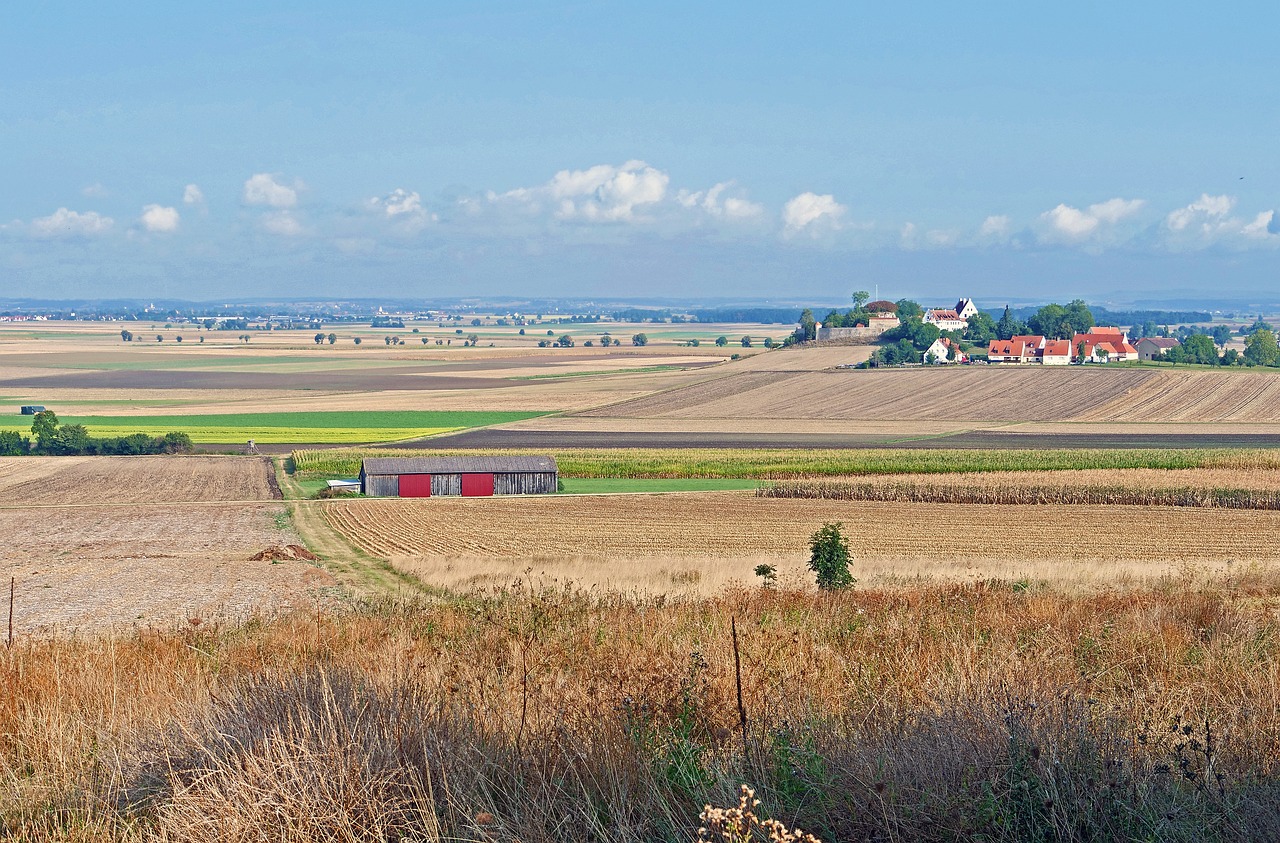
Effects on Non-Target Species
Pesticides are often viewed as a necessary evil in the quest for higher agricultural yields, but their effects extend far beyond the intended targets. While they are designed to eliminate pests, they inadvertently affect a wide range of non-target species, leading to significant ecological imbalances. This is a critical concern for biodiversity and ecosystem health, as these non-target species play vital roles in maintaining the delicate balance of our environments.
One of the most alarming consequences of pesticide use is the impact on beneficial insects. These tiny warriors of nature, such as ladybugs and predatory wasps, help control pest populations naturally, reducing the need for chemical interventions. When pesticides are applied indiscriminately, these beneficial insects can be decimated, leading to a resurgence of pest populations that are harder to manage. The ripple effect of this disruption can lead to a cascade of negative outcomes, affecting everything from crop yields to the overall health of the ecosystem.
Moreover, the adverse effects of pesticides extend to wildlife as well. Birds, amphibians, and even mammals can suffer from pesticide exposure, either directly or indirectly. For instance, birds that feed on insects contaminated with pesticides may experience reproductive issues or even mortality. The loss of these species can lead to overpopulation of pest species, creating a vicious cycle that ultimately harms agricultural productivity. This situation raises an important question: Are we sacrificing our ecosystems for short-term agricultural gains?
Pollinators, such as bees and butterflies, are essential for the reproduction of many plants, including those that produce our food. The decline in their populations due to pesticide exposure is a pressing concern for food security. Studies have shown that pesticides can impair the navigation abilities of bees, making it difficult for them to find food sources and return to their hives. This not only affects the bees themselves but also the plants that rely on them for pollination.
Neonicotinoids, a class of systemic pesticides, have garnered significant attention for their role in bee mortality. Research has indicated that these chemicals can disrupt the nervous systems of bees, leading to disorientation and decreased reproductive success. The implications of this are profound, as a decline in bee populations can threaten the very foundation of our agricultural systems. Without bees, many of the fruits and vegetables we take for granted would become scarce, leading to increased prices and reduced availability.
Beyond bees, the impact of pesticides on other beneficial insects cannot be overlooked. For instance, ladybugs are natural predators of aphids, while predatory wasps help control caterpillar populations. The decline of these insects due to pesticide exposure can lead to an unchecked increase in pest populations, necessitating even more pesticide use. This creates a harmful cycle that undermines the principles of sustainable agriculture.
In conclusion, the effects of pesticides on non-target species are far-reaching and can have devastating consequences for biodiversity and ecosystem health. As we strive for agricultural efficiency, it is crucial to consider the long-term implications of our pesticide use. By understanding and mitigating these effects, we can work towards a more sustainable and balanced approach to farming that protects both our crops and the environment.
- What are non-target species? Non-target species are organisms that are not intended to be affected by pesticides but can be harmed by their use.
- How do pesticides affect beneficial insects? Pesticides can kill or harm beneficial insects, disrupting their roles in pest control and pollination.
- What is the impact of pesticides on pollinators? Pesticides can impair the health and navigation abilities of pollinators like bees, leading to population declines.
- Why is biodiversity important? Biodiversity is crucial for ecosystem stability, resilience, and the provision of essential services like pollination and pest control.
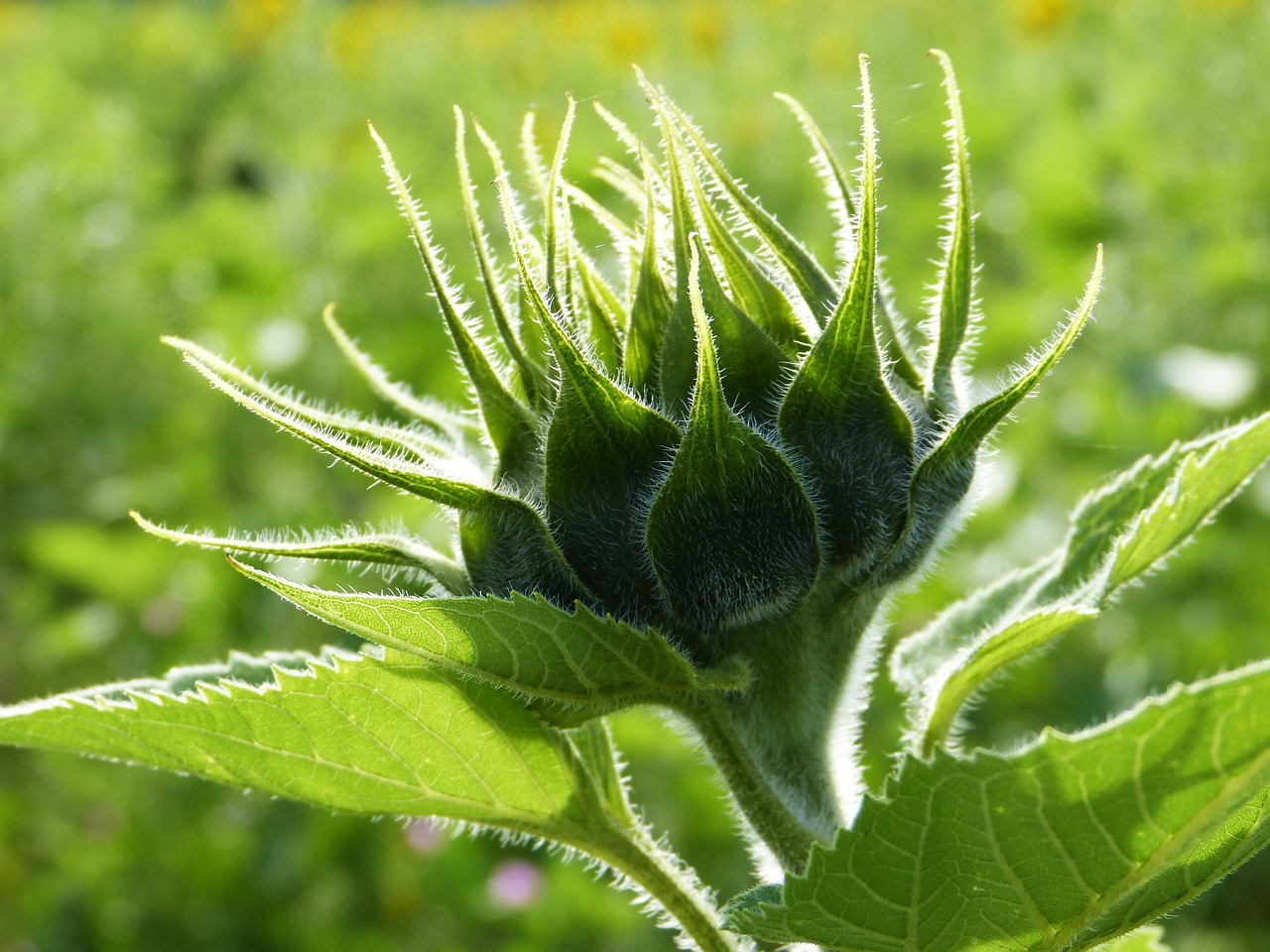
Impact on Pollinators
The role of pollinators in our ecosystems cannot be overstated. These small yet mighty creatures, particularly bees, butterflies, and even some birds, are responsible for the pollination of over 75% of the world's flowering plants. This includes a significant portion of the crops we rely on for food. However, the increasing use of pesticides in agriculture poses a serious threat to these essential organisms. Imagine a world without the sweet buzz of bees or the fluttering of butterflies—it's a grim thought, isn't it? The decline in pollinator populations due to pesticide exposure is alarming and raises red flags about our food security and ecological balance.
Research has shown that certain pesticides, particularly neonicotinoids, have a profound impact on pollinator health. These chemicals interfere with the nervous systems of insects, leading to disorientation, impaired foraging ability, and even death. It's like sending them on a wild goose chase where they can't find their way home. In fact, studies indicate that exposure to these substances can reduce bee populations by as much as 30%. This decline not only threatens the bees themselves but also jeopardizes the entire agricultural system that depends on their pollination services.
Moreover, the effects of pesticides extend beyond just bees. Other beneficial insects, such as ladybugs and predatory wasps, which help control pest populations, are also at risk. When these insects are harmed, it creates a ripple effect throughout the ecosystem. Without natural pest control, farmers may resort to even more pesticide applications, creating a vicious cycle of dependency on chemicals that further endangers pollinators and biodiversity.
To visualize the impact, consider the following table that highlights the relationship between pesticide use and pollinator population trends:
| Pesticide Type | Impact on Pollinators | Example Species Affected |
|---|---|---|
| Neonicotinoids | Disorientation, reduced reproduction, high mortality rates | Honeybees, bumblebees |
| Pyrethroids | Nervous system disruption, impaired foraging | Butterflies, moths |
| Herbicides | Reduction in food sources (flowers) | Bees, pollinating flies |
As we ponder this situation, it's crucial to consider what we can do to protect our pollinators. Implementing integrated pest management (IPM) practices and using organic alternatives to harmful pesticides can significantly reduce risks. Additionally, creating pollinator-friendly habitats by planting native flowers and reducing pesticide usage in residential areas can help bolster their populations. After all, if we want to keep enjoying the fruits of their labor, we must take action to ensure their survival.
- What are the main threats to pollinators? Pollinators face threats from habitat loss, pesticide exposure, climate change, and diseases.
- How do pesticides affect bee populations? Pesticides can lead to disorientation, decreased reproductive success, and increased mortality rates in bees.
- What can individuals do to help pollinators? Planting native flowers, reducing pesticide use, and supporting local beekeepers are great ways to help.
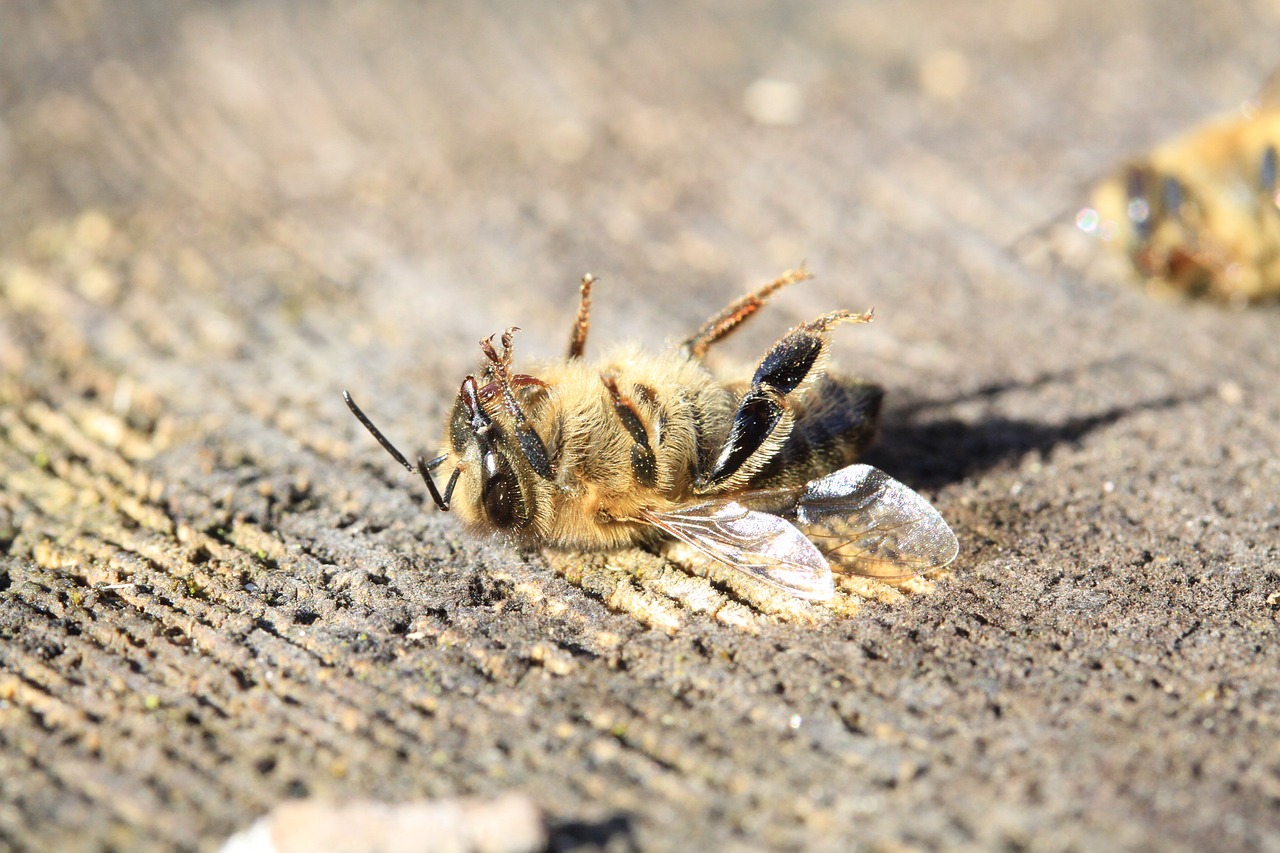
Neonicotinoids and Bee Populations
Neonicotinoids have become a buzzword in discussions about environmental health, particularly when it comes to our precious bee populations. These systemic pesticides, which are chemically similar to nicotine, are designed to target the nervous systems of insects. While they are effective in controlling pests, the unintended consequences for non-target species, especially bees, are alarming. Research has shown that neonicotinoids can disrupt bee navigation and reproductive health, leading to significant declines in bee populations. Imagine a world without bees; it’s not just a scary thought, but a reality that could unfold if we don’t address this issue.
One of the most troubling aspects of neonicotinoids is their persistence in the environment. Unlike some other pesticides that break down quickly, neonicotinoids can remain in the soil and water for extended periods, continuously affecting various organisms. This long-term exposure can lead to chronic health issues in bee populations, including impaired foraging behavior and weakened immune responses. Studies have indicated that bees exposed to these chemicals may struggle to return to their hives, much like a lost traveler without a map. This disorientation not only impacts their survival but also jeopardizes the entire ecosystem, as bees are crucial pollinators for many plants.
Furthermore, the effects of neonicotinoids extend beyond just individual bees. They can have cascading effects on entire colonies. A study published in the journal Nature found that colonies exposed to neonicotinoids showed reduced growth and reproduction rates. This decline can lead to fewer worker bees available for foraging, which in turn affects the colony's ability to gather food. As bee populations dwindle, the implications for agriculture become dire. Many of the fruits, vegetables, and nuts we consume rely on bee pollination. Without a healthy bee population, food security is at risk.
To put this into perspective, consider the following table that outlines the importance of bees in our ecosystem:
| Bee Species | Pollination Contribution | Key Crops Affected |
|---|---|---|
| Honey Bees | 70% of global crop species | Almonds, Apples, Berries |
| Wild Bees | Over 30% of crop species | Tomatoes, Peppers, Squash |
As we navigate the complex relationship between agriculture and pesticide use, it’s essential to consider the broader implications of neonicotinoids on bee populations and, consequently, on our food systems. The challenge lies in finding a balance that allows for effective pest control while protecting these vital pollinators. This is not just a matter of environmental concern; it’s a question of sustainability and food security for future generations.
In conclusion, the impact of neonicotinoids on bee populations is profound and multifaceted. Addressing this issue requires a collective effort from researchers, policymakers, and the agricultural community. By prioritizing bee health and exploring alternative pest management strategies, we can work towards a sustainable future where both agriculture and biodiversity thrive.
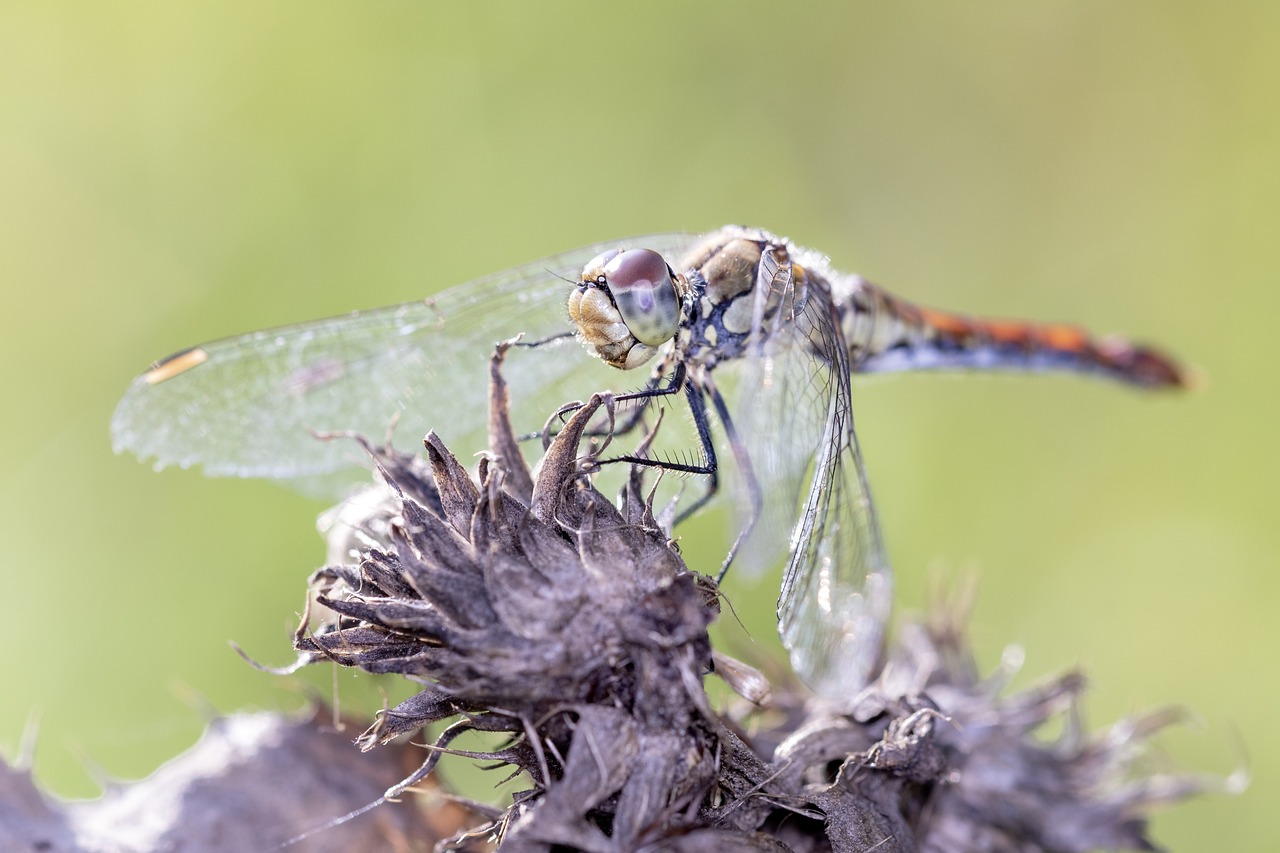
Effects on Other Beneficial Insects
Pesticides are not just a threat to bees; they can also have devastating effects on a variety of other beneficial insects. These tiny heroes of our ecosystems, such as ladybugs, predatory wasps, and lacewings, play crucial roles in natural pest control and pollination. Imagine a world where these helpful insects vanish—our gardens would be overrun with pests, and the delicate balance of our ecosystems would be thrown into disarray.
Ladybugs, often referred to as nature's aphid-eaters, are particularly vulnerable to pesticide exposure. These charming little beetles consume vast quantities of aphids and other plant pests, which helps farmers and gardeners maintain healthy crops without resorting to harmful chemical interventions. However, studies have shown that even sub-lethal doses of pesticides can impair their ability to reproduce and navigate, leading to population declines. This not only affects the ladybugs themselves but also the entire food chain that relies on them.
Similarly, predatory wasps, which are natural enemies of many crop-destroying insects, face significant risks from pesticide use. When these wasps are exposed to pesticides, they can experience disrupted behavior and reduced reproductive success. This can result in a chain reaction where the very pests they control begin to proliferate uncontrollably, forcing farmers to use even more pesticides—a vicious cycle that undermines sustainable farming practices.
Furthermore, the impact of pesticides on beneficial insects extends beyond immediate mortality. Research has indicated that these chemicals can affect the entomological microbiome, the diverse community of microorganisms living in and on insects. A healthy microbiome is essential for the insects' immune system, digestion, and overall health. When pesticides disrupt this balance, it can lead to increased susceptibility to diseases and environmental stressors, further threatening their populations.
As we consider the implications of pesticide use, it's essential to recognize that these chemicals don't discriminate. They can have wide-ranging effects on a variety of beneficial insects, contributing to biodiversity loss and destabilizing ecosystems. To illustrate this point, the table below summarizes the effects of pesticides on several key beneficial insects:
| Beneficial Insect | Role in Ecosystem | Effects of Pesticides |
|---|---|---|
| Ladybugs | Aphid control | Reduced reproduction, impaired navigation |
| Predatory Wasps | Pest control | Disrupted behavior, decreased reproductive success |
| Lacewings | Aphid and pest control | Increased mortality, weakened immune response |
In conclusion, the effects of pesticides on beneficial insects are profound and multifaceted. As stewards of the environment, it is our responsibility to advocate for practices that protect these vital allies in agriculture and biodiversity. By embracing integrated pest management strategies and reducing our reliance on harmful chemicals, we can foster healthier ecosystems and ensure the survival of these essential insect populations.
- What are beneficial insects? Beneficial insects are species that provide valuable services to ecosystems, such as pollination and natural pest control.
- How do pesticides affect beneficial insects? Pesticides can cause direct harm, such as mortality, or indirect harm, like reproductive issues and behavioral changes.
- What can be done to protect beneficial insects? Implementing integrated pest management, using organic alternatives, and promoting biodiversity can help protect these important species.
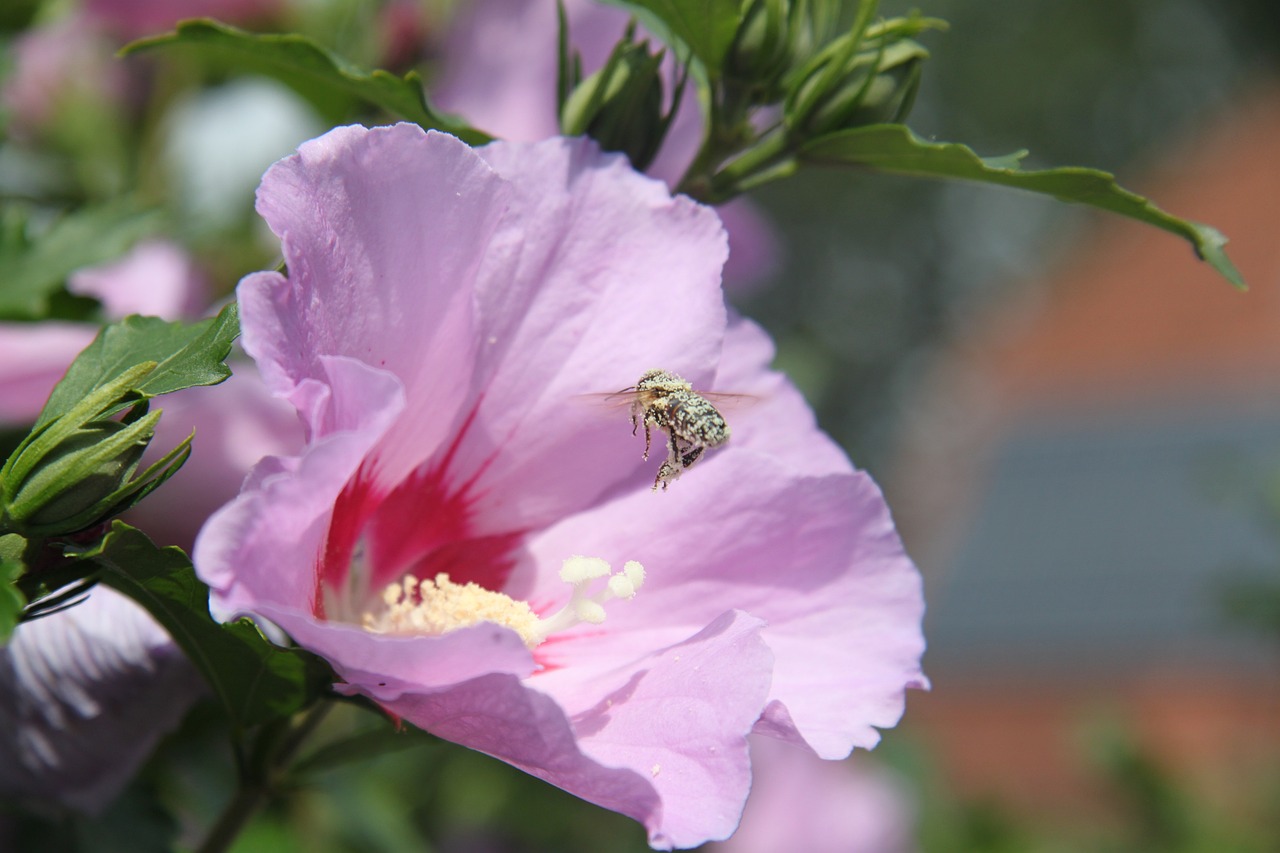
Impact on Aquatic Ecosystems
The impact of pesticides on aquatic ecosystems is a pressing issue that cannot be ignored. When these chemicals are applied in agricultural practices, they often find their way into nearby water bodies through runoff, leaching, or even direct application. This contamination can have devastating effects on aquatic life, disrupting not only individual species but entire ecosystems. Think of it as throwing a stone into a still pond; the ripples spread far and wide, affecting everything in their path.
One of the primary concerns is the effect of pesticides on fish populations. Fish are not just a food source for humans; they are also integral to the aquatic food web. When pesticides enter water bodies, they can be toxic to fish, leading to decreased populations and even local extinctions. For instance, studies have shown that certain pesticides can impair fish reproduction, growth, and behavior. This is alarming, as fish populations are already under stress from overfishing and habitat destruction.
Moreover, the effects of pesticides are not limited to fish. They also pose a significant threat to other aquatic organisms, such as amphibians, crustaceans, and even the microorganisms that form the base of the aquatic food web. These organisms play crucial roles in nutrient cycling and maintaining the health of aquatic habitats. When pesticides disrupt their populations, it creates a cascading effect, leading to a decline in biodiversity and ecosystem stability. Just like a chain reaction, one small change can lead to significant and often unforeseen consequences.
To illustrate the severity of this issue, consider the following table that summarizes the effects of common pesticides on various aquatic species:
| Pesticide Type | Target Species | Effects on Aquatic Life |
|---|---|---|
| Glyphosate | Fish | Reduced growth and reproduction |
| Chlorpyrifos | Amphibians | Developmental abnormalities |
| Neonicotinoids | Invertebrates | Population declines and behavioral changes |
It's also important to recognize that the impact of pesticides on aquatic ecosystems is not just an environmental issue; it’s a public health concern as well. Contaminated water sources can lead to unsafe drinking water, affecting communities that rely on these resources. Furthermore, the bioaccumulation of pesticides in aquatic organisms can pose risks to humans who consume fish and shellfish from affected waters. In essence, the ripples of pesticide use extend far beyond the immediate area of application, affecting the health of our ecosystems and communities alike.
In conclusion, the impact of pesticides on aquatic ecosystems is a complex interplay of ecological interdependencies. As stewards of the environment, it is our responsibility to consider the long-term consequences of pesticide use and seek sustainable alternatives that protect both our health and the health of our planet's precious water bodies.
- What are pesticides, and why are they used?
Pesticides are chemical substances used to kill or control pests in agriculture. They are essential for protecting crops but can have negative environmental impacts. - How do pesticides affect aquatic ecosystems?
Pesticides can leach into water bodies, harming fish and other aquatic organisms, disrupting food webs, and leading to biodiversity loss. - What can be done to mitigate the impact of pesticides?
Implementing sustainable farming practices, using integrated pest management, and regulating pesticide use can help reduce their impact on ecosystems. - Are there safer alternatives to traditional pesticides?
Yes, there are several organic and natural pest control methods available that can be as effective as synthetic pesticides without the harmful side effects.

Human Health Concerns
Exposure to pesticides has raised significant health concerns that cannot be overlooked. As we delve into the intricate relationship between pesticide use and human health, it becomes evident that this issue is not just an environmental concern but a pressing public health challenge. Pesticides are designed to kill pests, but they can also pose serious risks to humans, especially those who work closely with these chemicals. The potential links to serious health issues such as cancer, neurological disorders, and endocrine disruption highlight the urgent need for thorough investigations and regulatory measures.
When we think about pesticide exposure, it's essential to differentiate between acute and chronic exposure. Acute exposure refers to short-term contact with high levels of pesticides, which can lead to immediate health effects like headaches, dizziness, and nausea. On the other hand, chronic exposure occurs over a long period, often at lower levels, and is associated with more severe health outcomes, including long-term illnesses that can develop silently over time. This distinction is crucial for assessing health risks and implementing effective safety protocols for agricultural workers and surrounding communities.
Particularly concerning are the effects of pesticide exposure on vulnerable populations. Certain groups, such as children, pregnant women, and farmworkers, are at a heightened risk. For instance, children are more susceptible due to their developing bodies and behaviors, such as playing in treated areas or putting their hands in their mouths. Farmworkers, who are often exposed to pesticides on a daily basis, face unique challenges. They may not have adequate protective gear or training, leading to increased health risks. Addressing the unique vulnerabilities of these populations is vital for public health initiatives and policy development.
To provide a clearer understanding of the health risks associated with pesticides, consider the following table that outlines some common health effects linked to pesticide exposure:
| Health Effect | Description |
|---|---|
| Cancer | Long-term exposure to certain pesticides has been associated with various forms of cancer, including leukemia and lymphoma. |
| Neurological Disorders | Pesticides can affect the nervous system, leading to conditions such as Parkinson's disease and cognitive decline. |
| Endocrine Disruption | Some pesticides can interfere with hormone function, potentially leading to reproductive issues and developmental problems. |
In conclusion, the health concerns surrounding pesticide exposure are multifaceted and warrant serious attention. As we continue to uncover the links between pesticides and various health issues, it becomes increasingly clear that we need to advocate for safer practices and more stringent regulations. The health of our communities, particularly the most vulnerable among us, depends on it.
- What are the symptoms of pesticide exposure? Symptoms can include headaches, dizziness, nausea, and in severe cases, respiratory issues or skin reactions.
- How can I reduce my exposure to pesticides? Washing fruits and vegetables thoroughly, opting for organic produce, and using natural pest control methods can help minimize exposure.
- Are there regulations in place to protect workers from pesticide exposure? Yes, many countries have regulations that require safety training and protective equipment for agricultural workers, but enforcement can vary.
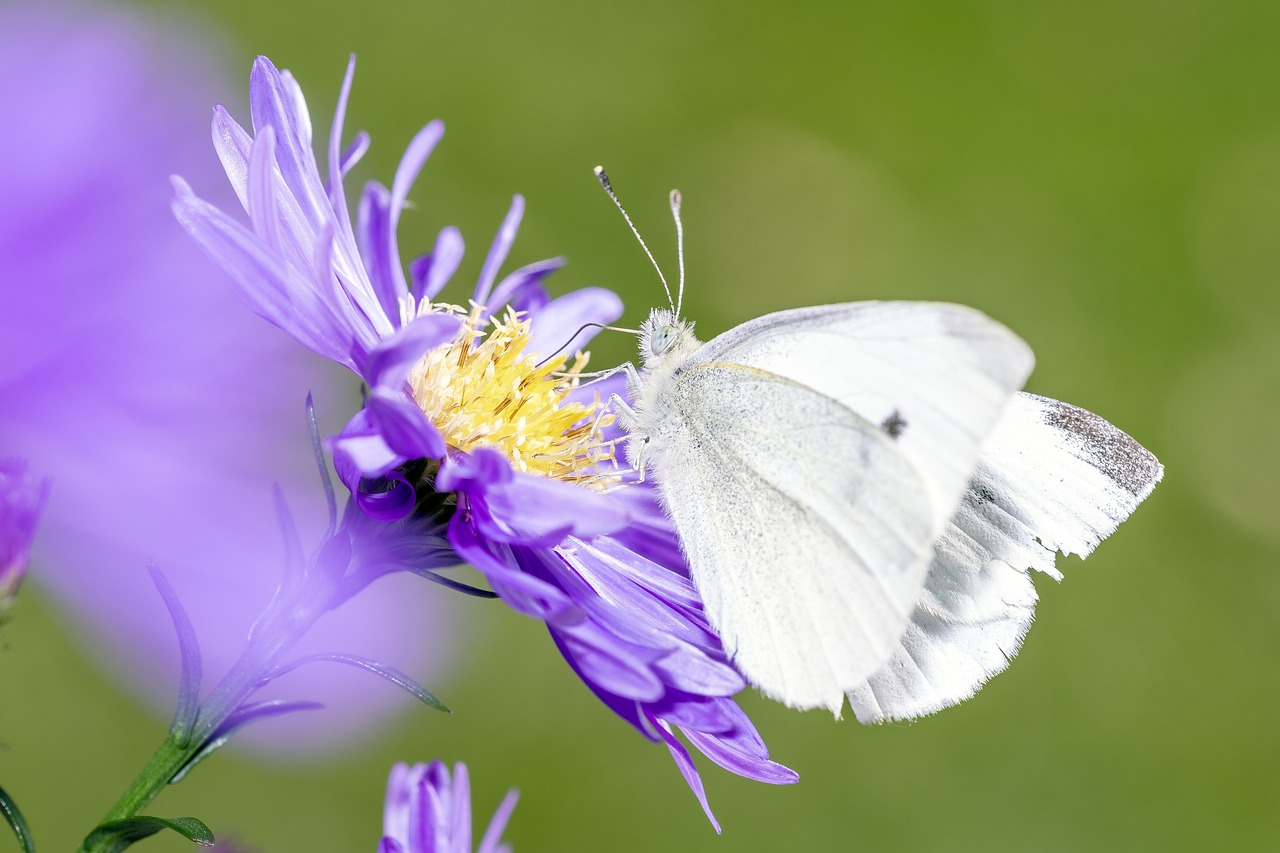
Acute vs. Chronic Exposure
When it comes to understanding the risks associated with pesticides, it's crucial to differentiate between acute and chronic exposure. Think of acute exposure as a sudden shock to the system, like a lightning strike. It occurs when an individual is exposed to a high concentration of pesticides for a short period. This could happen during a one-time application of pesticide in a field or even from a spill. The effects can be immediate and severe, ranging from nausea and headaches to more serious conditions like respiratory distress or even death in extreme cases.
On the other hand, chronic exposure is more like a slow drip, gradually affecting an individual over time. This form of exposure happens when a person is subjected to lower levels of pesticides repeatedly, often without realizing it. For example, farmworkers who handle pesticides regularly or residents living near agricultural areas may be exposed to these chemicals over extended periods. Chronic exposure has been linked to long-term health issues, including cancer, neurological disorders, and endocrine disruption. These health problems may not surface until years later, making it challenging to connect them directly to pesticide use.
To illustrate the differences more clearly, let’s look at a quick comparison:
| Aspect | Acute Exposure | Chronic Exposure |
|---|---|---|
| Duration | Short-term | Long-term |
| Concentration | High | Low |
| Onset of Symptoms | Immediate | Gradual |
| Health Effects | Severe, possibly life-threatening | Long-term health issues |
Understanding these differences is vital for implementing safety protocols, especially for agricultural workers who are on the front lines of pesticide application. Workers need to be educated about the risks of both types of exposure to protect themselves effectively. Regulations must be in place to minimize both acute incidents—like ensuring proper protective gear is worn during pesticide application—and chronic exposure risks, such as limiting the amount of pesticide residue that can remain on crops.
Furthermore, communities near agricultural lands should be informed about potential risks associated with living close to farms using pesticides. Awareness can lead to better health outcomes and a push for policies that prioritize public health alongside agricultural productivity.
- What are the symptoms of acute pesticide exposure? Symptoms can include headaches, dizziness, nausea, vomiting, and in extreme cases, respiratory failure.
- How can I protect myself from chronic exposure? Use protective gear, follow safety guidelines, and ensure proper ventilation when applying pesticides.
- Are children more vulnerable to pesticide exposure? Yes, children are at a higher risk due to their developing bodies and behaviors that increase exposure, such as playing on the ground.
- What should I do if I suspect pesticide exposure? Seek medical attention immediately if you experience severe symptoms, and report the incident to the relevant authorities.

Vulnerable Populations
When we discuss the impacts of pesticides, we can't overlook the fact that certain groups of people are particularly vulnerable to their harmful effects. This vulnerability stems from a variety of factors, including age, occupation, and socioeconomic status. For instance, children are often more susceptible to pesticide exposure than adults due to their developing bodies and behaviors—like playing in gardens or on farms where pesticides may have been applied. Their smaller size and higher metabolic rates mean that they can absorb and retain toxic substances more readily, increasing their risk of adverse health effects.
Moreover, farmworkers are on the front lines of pesticide exposure, often working directly with these chemicals without adequate protective measures. Many farmworkers are immigrants who may not have access to health care or information about the risks associated with pesticide exposure. This lack of resources can lead to a cycle of health issues that not only affects them but also their families and communities.
In addition to children and farmworkers, other vulnerable populations include those living in agricultural communities. These individuals may be exposed to pesticide drift—where chemicals move from the intended application area to nearby homes or schools—putting them at risk for both acute and chronic health issues. The following table summarizes the key vulnerable populations and their associated risks:
| Population | Risks |
|---|---|
| Children | Higher absorption rates, developmental issues |
| Farmworkers | Direct exposure, lack of protective measures |
| Residents of Agricultural Communities | Pesticide drift, chronic health issues |
| Pregnant Women | Potential birth defects, developmental delays in children |
Addressing the unique risks faced by these populations is essential for effective public health initiatives and policy development. We must advocate for stricter regulations on pesticide use and promote safer alternatives in agriculture. By doing so, we can protect those who are most at risk and contribute to a healthier environment for everyone.
In conclusion, understanding the vulnerabilities of specific populations is crucial in the fight against the negative impacts of pesticides. It’s not just about the chemicals themselves; it’s about the people who are affected by them. Awareness and action can lead to significant improvements in public health and environmental sustainability.
- What are the main health risks associated with pesticide exposure? Pesticide exposure can lead to various health issues, including respiratory problems, skin irritations, neurological disorders, and even cancer.
- How can vulnerable populations protect themselves from pesticide exposure? They can minimize exposure by using protective gear, staying indoors during pesticide applications, and advocating for safer farming practices.
- Are there alternatives to chemical pesticides? Yes, there are several organic and natural pest control methods available, such as biological control, crop rotation, and the use of neem oil.
Frequently Asked Questions
- What are pesticides, and why are they used in agriculture?
Pesticides are chemical substances used to prevent, destroy, or control pests that can harm crops. They are essential for ensuring high agricultural yields and protecting food supplies. However, their widespread use raises concerns about potential long-term effects on the environment and human health.
- How do pesticides affect non-target species?
Pesticides can have detrimental effects on non-target species, including beneficial insects like bees and ladybugs, as well as wildlife. These chemicals can disrupt the balance of ecosystems, leading to declines in biodiversity and affecting species that play crucial roles in pollination and pest control.
- What is the impact of pesticides on pollinators?
Pollinators, especially bees, are vital for food production. Pesticide exposure can lead to declines in their populations, which threatens agricultural yields and food security. Studies have shown that certain pesticides, like neonicotinoids, can disrupt bee navigation and reproductive health, further exacerbating the problem.
- Are there specific pesticides that are more harmful to bees?
Yes, neonicotinoids are a class of pesticides that have been particularly linked to bee mortality. Research indicates that these chemicals can impair bees' ability to navigate and reproduce, leading to significant population declines. This poses a serious threat to both ecosystems and agricultural productivity.
- How do pesticides affect aquatic ecosystems?
Pesticides can leach into water bodies, contaminating aquatic life. This contamination can harm fish populations and disrupt entire aquatic food webs. The effects can ripple through the ecosystem, affecting not only aquatic species but also those who rely on them for food.
- What are the health concerns associated with pesticide exposure?
Exposure to pesticides has been linked to various health issues, including potential risks of cancer, neurological disorders, and endocrine disruption. Both acute and chronic exposure can pose health risks, making it crucial to implement safety protocols for agricultural workers and communities.
- What is the difference between acute and chronic pesticide exposure?
Acute exposure refers to short-term contact with pesticides, often resulting in immediate health effects. Chronic exposure, on the other hand, involves long-term contact and can lead to more serious health issues over time. Understanding these differences is essential for assessing risks and implementing appropriate safety measures.
- Who is most vulnerable to pesticide exposure?
Certain populations, including children and farmworkers, are more susceptible to the harmful effects of pesticide exposure. Addressing their unique risks is vital for public health initiatives and developing policies that protect these vulnerable groups from potential health hazards.



















